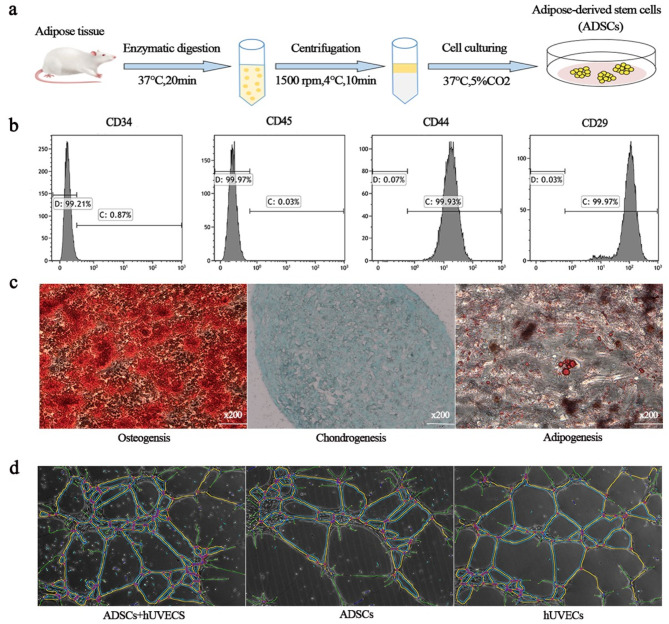Today, we’re diving into the groundbreaking world of stem cells and platelet-rich plasma (PRP) therapy. These innovative treatments are transforming how we address joint pain, offering hope for healthier, pain-free movements. Let’s explore how these biological therapies work, the promising research behind them, and what the future holds for their availability.

Platelet-Rich Plasma and Adipose-Derived Mesenchymal Stem Cells
Imagine your body as a finely tuned orchestra, with each cell playing its part to maintain harmony. When joint pain strikes—often due to conditions like osteoarthritis—the harmony is disrupted. This is where Platelet-Rich Plasma (PRP) and Adipose-Derived Mesenchymal Stem Cells (ADSCs) come into play, acting as conductors to restore balance.
Platelet-Rich Plasma: Boosting Healing Naturally
PRP therapy leverages your body’s natural healing capabilities. Platelets, tiny blood cells, are packed with growth factors that promote tissue repair and regeneration. Here’s how PRP works:
- Extraction and Concentration: A small sample of your blood is drawn and processed to concentrate the platelets.
- Injection: This concentrated PRP is then injected directly into the affected joint.
- Action: Once inside the joint, PRP releases growth factors that reduce inflammation and stimulate the regeneration of cartilage and other joint tissues.
Think of PRP as a nutrient-rich fertilizer that revitalizes a wilting plant. By enhancing the body’s innate repair mechanisms, PRP helps mend damaged tissues and alleviate pain.
Adipose-Derived Mesenchymal Stem Cells: Regenerating Joint Tissues
ADSCs are a type of stem cell harvested from your body’s adipose (fat) tissue. These versatile cells have remarkable regenerative capabilities:
- Isolation and Preparation: Fat tissue is gently harvested, and ADSCs are extracted and concentrated.
- Injection: The concentrated ADSCs are injected into the damaged joint.
- Mechanism of Action:
- Reducing Inflammation: ADSCs secrete anti-inflammatory molecules that calm the joint environment, decreasing pain and swelling.
- Tissue Regeneration: These stem cells differentiate into various cell types, including cartilage cells, aiding in the repair and regeneration of damaged joint tissues.
Imagine ADSCs as skilled builders, reconstructing the worn-out parts of your joint to restore its original strength and flexibility.
The Synergy of PRP and ADSCs: A Powerful Combination
When combined, PRP and ADSCs work synergistically to enhance each other’s effects. PRP provides the growth factors that create an optimal environment for ADSCs to thrive and regenerate tissues. This combination therapy not only reduces inflammation but also accelerates the healing process, offering a comprehensive approach to joint pain management.
Breakthrough Research: Pain Reduction and Joint Health Improvement
Scientific research is the backbone of these therapies, validating their effectiveness and guiding their application. Let’s delve into some key findings from recent studies that highlight the promise of PRP and ADSCs in treating joint pain.
1. Reducing Inflammation: The First Line of Defense
Inflammation is a primary culprit behind joint pain, especially in osteoarthritis. High levels of inflammatory cytokines like TNF-α and IL-1β contribute to tissue degradation and pain. The study conducted by He et al. (2025) explored the impact of PRP and ADSCs on these inflammatory markers in a rat model of osteoarthritis.
Key Findings:
- Significant Reduction in Inflammatory Markers: Rats treated with PRP and/or ADSCs showed a substantial decrease in TNF-α and IL-1β levels compared to untreated groups.
- Enhanced Anti-Inflammatory Effects: The combination of PRP and ADSCs demonstrated a more pronounced reduction in inflammation than either treatment alone.
These results underscore the ability of PRP and ADSCs to modulate the immune response, creating a less hostile environment within the joint and paving the way for healing.
2. Promoting Tissue Regeneration: Building Stronger Joints
Beyond reducing inflammation, PRP and ADSCs play a crucial role in regenerating damaged tissues. The same study by He et al. (2025) examined how these treatments influenced tissue repair and joint health.
Key Findings:
- Improved Cartilage Health: Treated rats exhibited smoother articular surfaces and reduced cartilage thinning, indicating effective tissue regeneration.
- Enhanced Joint Structure: Radiological assessments revealed that treated groups had fewer signs of joint deformation and osteophyte formation (bone spurs), common indicators of osteoarthritis progression.
These outcomes highlight the regenerative potential of PRP and ADSCs, suggesting that these therapies can not only alleviate pain but also restore the structural integrity of joints.
3. Pain Reduction: Enhancing Quality of Life
Pain is the most debilitating symptom of joint disorders, significantly impacting daily activities and overall well-being. The study demonstrated that PRP and ADSCs effectively reduced pain levels in the rat model.
Key Findings:
- Decreased Knee Swelling: Treated rats showed lower rates of knee swelling, a direct indicator of reduced pain and inflammation.
- Behavioral Improvements: Improved joint health translated into better mobility and activity levels, suggesting a tangible reduction in pain-related limitations.
These findings provide compelling evidence that PRP and ADSCs can significantly enhance the quality of life for individuals suffering from joint pain by addressing both the symptoms and underlying causes.
The Future of Joint Pain Treatment: Ongoing Research and Clinical Trials
Scientists are doing lots of experiments and tests to make sure PRP and ADSCs really work and are safe for people to use. These tests help them figure out the best way to use these treatments, like how much to give and how often to use them. They also want to see if these treatments can help other joints, not just the knees, like hips, shoulders, and backs. And most importantly, they check to make sure these treatments don’t cause any bad side effects.
Making Sure PRP and ADSCs Are Safe and Approved
Before PRP and ADSCs can be used by doctors everywhere, they need to get special approvals from important organizations that make sure treatments are safe and work well. Scientists are creating clear rules on how to prepare and use PRP and ADSCs so that everyone uses them the right way. Once they get these approvals, more doctors will start using these treatments to help their patients.
Making PRP and ADSCs Easier to Get and Cheaper
As more scientists learn about PRP and ADSCs and get them approved, these treatments will become easier to get. New machines and tools are being made to collect and prepare PRP and ADSCs faster and cheaper. This means that more people can afford to use these treatments. Also, some health insurance companies might start helping to pay for them, so even more people can benefit.
Personalized Treatments Just for You
In the future, doctors will be able to create special treatments just for each person. This means that PRP and ADSCs can be adjusted based on how bad someone’s joint pain is, how healthy they are, how old they are, and even their genes (which are like the instructions inside our bodies). This way, everyone can get the best possible help for their joint pain.
Working Together with Other Therapies
PRP and ADSCs won’t be the only ways to help with joint pain. They can be used along with other treatments to make them work even better. For example:
- Exercise and Physical Therapy: Doing special exercises can make muscles stronger and joints move better, which helps the treatments work even more.
- Healthy Eating: Eating the right foods and taking vitamins can help keep joints healthy.
- Healthy Habits: Doing things like keeping a good weight and doing gentle activities can take pressure off joints and help them stay strong.
Embracing the Future: Your Path to Joint Health
Using stem cells and plasma therapy is like finding new and exciting ways to help your joints feel better. These treatments use your own body’s natural healing powers to fix hurt parts, make swelling go down, and help your joints stay strong and healthy. As scientists keep learning more and these treatments become easier to get, people who have joint pain will have better chances to feel good and move around without hurting.
At EndingJointPain.com, we believe in empowering you with the knowledge and tools to take control of your joint health. Embrace the advancements in biology, and take a step toward a pain-free, active life today.
Sources:


